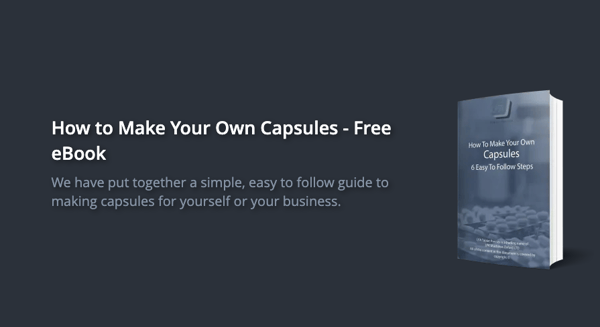
Picture this — you’re running a small business with big ambitions but not much extra cash to throw at advertising. You want to get your brand in front of more people, connect with the big names in your industry, and generate buzz that feels like real PR magic.
Do you think that’s too good to be true? Well, this strategy does exist.
Cross-promotion is the marketing strategy that lets you skyrocket your brand’s reach without breaking the bank. Think of it as teaming up with other brands to help each other shine. It enables you to build relationships with top names in your field, even if you’re still flying under the radar.
Cross-promotion is a strategic partnership where two or more brands collaborate to promote each other’s products or services. Instead of competing, they combine resources to reach broader audiences, cut marketing costs, and boost sales through co-branded campaigns, joint events, or content sharing.
Brands can use sales tools like partner management software to manage and track their cross-promotion partnerships, collaborations, and results.
In this guide, you will learn about the importance of cross-promotion, how to build your cross-promotion marketing campaign, and get a list of 11 actionable ideas to implement in your own business. Let’s start with the basics.
TL;DR: Everything you need to know about cross-promotion
Cross-promotion helps you link arms with other businesses and ”cross-promote” each other's products and services. By partnering with other brands, you can reduce marketing costs and improve your value chain strategy.
“Due to the incredibly competitive world we live in, where manufacturing products is easier than ever, high-quality, relevant, and timely sales and marketing can be a make-or-break,” says Kathryn Kosmides.
And the right cross-promotion campaign can provide you with the competitive advantage you need in our hyper-competitive world.
For instance, take a look at this picture:
This is cross-promotion in its purest expression.
Joint marketing campaign examples like this illustrate just how versatile and impactful cross-promotion can be, no matter your budget size.
By featuring Shrek with their products, McDonald’s attracted more customers (e.g., parents and “cinephiles”), while DreamWorks (the company behind the Shrek franchise) increased exposure and anticipation for the movie.
Now, does that mean you need deep pockets to tap into this strategy? Of course not.
Regardless of the scope of your business, you can implement cross-promotion effectively. Let’s explore how.
Marketing strategies can sometimes sound like alphabet soup, but understanding how cross-promotion, co-branding, and influencer marketing differ is key to choosing the right approach for your brand.
All three involve partnerships but play out uniquely with different goals, benefits, and use cases. Let’s break it down so you know exactly when and why to use each.
| Feature | Cross-promotion | Co-branding | Influencer marketing |
| Definition | Two or more brands promote each other’s products or services to expand reach | Two brands collaborate to create a new product or service together | Brands partner with influencers to promote products to their followers |
| Main goal | Mutual exposure and audience sharing | Create a combined product that leverages both brands’ strengths | Leverage influencer credibility and reach to boost brand awareness and sales |
| Typical format | Joint campaigns, content sharing, giveaways, events | Co-created products, limited-edition releases, joint branding | Sponsored posts, reviews, endorsements on social media or content platforms |
| Benefits | Cost-effective, expands audience, builds partnerships | Differentiation through unique offerings, shared costs, brand synergy | Authentic engagement, targeted reach, social proof |
| Best for | Brands looking for low-risk, mutual growth partnerships | Brands wanting to innovate with unique joint products | Brands aiming for authentic endorsements and direct consumer influence |
| Example | A restaurant and a local butcher promoting each other | Nike and Apple creating the Nike+ product line | A fitness influencer promoting workout gear on Instagram |
Cross-promotion is all about teamwork without merging identities. Each brand keeps its style and products, but helps the other reach new customers through shared marketing efforts. It’s flexible, cost-effective, and ideal for brands wanting a win-win with minimal risk.
Co-branding is your go-to if you want to create something fresh that blends two brands into a new product or service. It’s a deeper collaboration that can generate excitement and buzz but requires more coordination and shared investment.
Influencer marketing leverages the trust and reach of individuals who have built loyal followings. It’s less about the brand partnership and more about tapping into personal credibility to connect with niche audiences authentically.
Picking the right strategy depends on your goals, resources, and how closely you want to work with partners. Use this comparison as your roadmap to decide which path makes the most sense for your next campaign. For example, B2B cross-promotion can be especially effective when pairing complementary brands that serve the same professional audience without directly competing.
Cross-promotion is a lot like matchmaking — but instead of playing cupid, you’re setting up two brands for mutual success. To get it right, you need more than just good intentions; you need a clear, step-by-step plan that helps both sides win.
Here’s how to build a cross-promotion campaign that delivers real results, without the guesswork:
Finding the right partner for cross-promotion is like choosing a dance partner—you want someone who moves well with you, complements your style, and helps you shine. Picking just any brand with a logo won’t cut it. Your ideal partner should share your target audience without stepping on your toes as a direct competitor.
Start by thinking about your customers. Who are they? What do they like or need? Then ask yourself:
Ensure your brands feel like a natural fit to avoid confusing your customers. Don’t overlook smaller or newer brands; they can have tight communities and great connections.
Before you pitch your idea, think about what’s in it for your potential partner. Partnerships only work when both sides benefit — no one wants to do all the work and get nothing in return.
Here’s how you can make your offer appealing by focusing on what your partner will gain:
Focus on their benefits, and you’ll build a strong, win-win partnership.
Be clear about what success looks like. Is it growing your email list? Driving sales? Boosting brand awareness? Your goals will shape your tactics. Common cross-promo tactics include:
A great campaign can quickly go sideways without a solid timeline and clear responsibilities. Think of this step as building the campaign’s backbone — it keeps everything aligned, on schedule, and running smoothly.
Set realistic deadlines for each phase to save time for approvals and unexpected delays. To avoid confusion, assign someone responsible for every task—like copywriting, design, social posts, and customer support—to avoid confusion. Use a shared tool or a simple spreadsheet so everyone stays updated on progress. Schedule regular check-ins to keep things on track and catch issues early. And always have a backup plan in case deadlines slip.
A clear timeline and defined roles turn potential chaos into smooth teamwork and a successful campaign.
Once everything’s set, launch your campaign simultaneously with your partner to double the impact. Use every channel — emails, social media, blogs — and boost reach with paid ads if you can. Keep messaging consistent, and don’t forget offline promos if they fit. Stay active by engaging with your audience and encouraging your partner to do the same. Teamwork makes the dream work!
Set up tracking links and unique promo codes to measure results accurately. Watch key metrics like traffic, engagement, and conversions. Check in regularly with your partner to tweak and improve as you go. After the campaign, review what worked and what didn’t, so your next cross-promotion is even stronger.
Brilliant execution plus solid measurement turns cross-promotion into a repeatable growth machine.
Cross-promotion is a playground of possibilities, but jumping in without a plan can feel overwhelming. To make it easier, let’s break down 11 bright ideas into four simple categories: contest and giveaway strategies, partnership approaches, content-driven tactics, and event and influencer moves. This way, you can pick the best fit for your brand and goals.
Use the power of free stuff and exclusivity to boost engagement and expand reach — fast and cost-effectively.
Brands often underestimate the power of free.
People are willing to do crazy stuff just to get free things. Reebok, for example, ran a contest a few years ago promising a one-year sponsorship to whoever got the biggest Reebok logo tattoo.
Surprisingly, many people participated, and the campaign was a success. The point? If people are willing to get a logo tattoo for free stuff, there’s a lot you can accomplish by offering something for nothing.
When running a co-branded contest, you can tap into the natural longing people have for free things. That’s exactly what Fabletics and Bliss, two retail companies, did to get more traction for an Instagram giveaway.
By doing this, they built more buzz around the event and garnered more participants.
You can apply the same strategy by partnering with other businesses and running a massive contest, giveaway, or sweepstake. Create a product bundle where each of your partners gives away something special.
Since each brand would promote the contest to their respective audiences, you’d drive much more attention than doing it alone. But instead of just publishing the contest on your social accounts and praying that people respond, you should launch a paid media campaign on top of your organic efforts.
Think about it. Companies spend over $100 billion a year on paid ads for a reason: they work.
By promoting your contest through PPC platforms, you’ll increase your chances of success. But unless you have experience with PPC platforms, your smartest bet is to look for someone who does (e.g., an agency or consultant). Just make sure to find someone with deep experience in your field.
A quick look at their website will tell you whether they’re a good fit. You should do your homework and research some agencies before making a decision. The more experience an agency has in your industry, the better the results you’ll see.
In short, the right contest, with the right partners, supported by a well-executed PPC campaign, can drive massive results. To manage your giveaways efficiently and track partner contributions, consider using Campaign Management Software.
Have you ever heard about Groupon, RetailMeNot, or Savings.com? If so, then you probably know the power of discounts. Loyalty programs and special sales are some of the most effective ways to delight current customers and attract new ones.
Now, what if you applied this strategy with potential partners? Create a referral program where you give a commission (or some kind of reward) every time a partner makes a sale. Bloggers and influencers are especially keen on this kind of offer as they’re always looking for ways to monetize their audiences.
Simple? Yes. Effective? Absolutely.
Smart collaborations with the right businesses can unlock new audiences without stepping on competitive toes.
The whole point of cross-promotion is to build partnerships where all parties benefit. If you approach direct competitors, you probably won’t get good results. That’s why you should look for partners outside your main industry.
For instance, if you’re a psychologist, you could partner with local massage parlors that will recommend your services to their stressed clients, and vice versa.
If you’re the owner of marketing automation software, you could partner with accountants who send enterprise referrals your way. In exchange, you could give them free software accounts for their marketing efforts.
And if you’re a business consultant, you could think creatively and partner with bar owners who recommend your services to drunk entrepreneurs who need some help.
To find potential partnerships, ask yourself:
By answering these questions, you’ll come up with creative ideas for cross-promotion.
In the book “Influence: The Psychology of Persuasion,” Robert B. Cialdini introduces the concept of “Reciprocation”. That is the fact that humans tend to reward kind actions. For instance, if someone gives you a Christmas gift, but you don’t have a gift for that person, you’ll probably feel the need to buy them something later.
This principle also applies to business relationships. If you want to find valuable partners for cross-promotion, create something meaningful for them and give it away.
The most common “shareable gifts” include:
The most important thing isn’t the gift format, but what the gift is all about. It should be something related to your partner’s audience.
For instance, if your partner runs a marketing blog, you should talk about social media, CRO, copywriting, and business strategy. If they own a software company, you should talk about how the product solves problems the audience is facing.
With this list of topics in mind, you should create a high-quality, share-worthy piece of content.
Now, how can you select the right format? The answer lies in the nature of your topic.
For instance, paraphrasing Richter Studios: “Animation videos are especially helpful when you need to explain sophisticated concepts in a visual, easy-to-understand way, or the features and benefits of the product are difficult to showcase through custom-filmed footage.”
If the nature of the topic is a bit simpler, a downloadable guide or blog post might cut it.
Now, keep in mind that “simple” doesn’t mean simplistic. Regardless of the format you choose, the content you create should be memorable and extremely useful.
Once you have a shareable asset in place, it’s time to reach out to your partner and offer full rights to the piece. If you do this right, your partners won’t only feel happy to promote your piece (and brand), but you’ll also develop a long-lasting relationship for future events.
Leverage content you already have or create together to spread your message further and faster.
It’s not a secret that podcasting has become a favorite marketing channel for brands of all types.
There’s a great reason for that. Take Buzzsprout, for example. It’s a free podcast hosting solution that reports 92,661,520 podcast downloads every single month.
And Buzzsprout is just one of many podcasting platforms out there.
Here’s the good news: Tapping into this trend is easier than it might seem. You see, podcast owners are always looking to fill time at their shows. It’s their job. And if you make their life easier by filling that time, they’ll reward you with free exposure.
But how can you find podcasts in your industry? Here’s where LinkedIn comes in. Thanks to LinkedIn’s filtering options, finding podcast hosts in your industry is relatively simple.
Simply type “Podcasts” in the search box located at the upper-left corner and then select your industry of choice. LinkedIn will then provide you with a huge list of podcast producers and hosts. Just add them as connections and start building genuine relationships.
To make the deal even sweeter, you could prepare a special discount or offer for the host’s audience. This way, they'll have an extra reason to take you as a guest.
Many people believe that cross-promotion is all about finding external partners, but that’s not always the case. You can also cross-promote with your own assets.
For instance, if you’re already creating blog content, you could make it more visible by featuring it on your homepage, just like Legacy Healing does.
When you visit their site, one of the first things you stumble upon is a section called “Article Contents,” where they feature their most popular blog posts. This is a great way to increase blog awareness for new visitors and answer some of their most common questions.
Or, if you’re producing YouTube videos, think of ways to make them available in other formats. By transcribing those videos and turning them into articles, for example, you could reach audiences who prefer reading over watching
The point is that you have to think outside the box and look for ways to get the most out of the assets you already have.
Books and eBooks are excellent tools of persuasion, especially if they talk about a topic the audience is interested in.
Educating your customers is always a good idea. Now, instead of writing an eBook on your own (or paying someone to do so), why don’t you find some partners to join the process?
If you create a co-branded eBook, you’ll get way more exposure and the opportunity to build long-term relationships with strategic partners. And you don’t need to spend a year putting this together.
For instance, you could just pick a few articles from your blog and turn them into an eBook. You could also transcribe and format some of your YouTube videos and use that content to speed up the process
Just make sure the eBook you create is visible. Take a look at LFA Capsule Fillers. When you land on their homepage, you’ll see they feature a free eBook relevant to their audience.

This simple practice has helped them increase customer engagement and drive a higher number of leads. Just remember, creating an eBook and promoting it are two very different things. Make sure you do both.
Build relationships, gain visibility, and connect with communities through real-time and online presence.
When done right, events can be a great way to build trust with your audience and position yourself as the go-to leader in your industry.
Take Salesforce’s Dreamforce, for example.
Each year, about 100,000 people attend this event. It’s a major contributor to Salesforce’s adoption among mainstream audiences. HubSpot’s Inbound event is another example of this strategy in action. They even bought a separate domain to build a subsidiary brand around HubSpot’s culture and values.
Now you’re probably thinking: “That sounds great, but putting together an event is expensive, right?”
Well, not quite. Here’s where cross-promotion comes in.
By finding sponsors, speakers, and partners, organizing a solid event around your business isn’t that hard or expensive. Besides, it doesn’t have to be an in-person event. Virtual events are definitely a thing nowadays, and they’re relatively inexpensive.
Simply make a list of brands that might be potentially interested in sponsoring your event and start a conversation. Even if you have to make a moderate initial investment, a well-executed event always pays off.
If you pay attention to 2021’s Super Bowl ads, you’ll find a trend: most of them tapped celebrities and influencers.
Why? In a word: empathy.
The right influencers can make your brand more human and relatable. Besides, by featuring people your audience respects and admires, you borrow some of their credibility to boost yours.
The good news is that you don’t need a Super Bowl budget to implement this strategy. First, create a list of some of the major influencers in your industry. A simple Excel spreadsheet can be helpful for this.
Now, with your influencers list in place, you have two options:
In the first scenario, you’d just want to let them know you mentioned them. Some of them will share your content with their audiences. If you choose the second path, you’ll add an extra layer to the process. Instead of just mentioning influencers, you must contact them before publishing and ask for feedback.
Let them know you’ve been following them for a while and would appreciate some advice to improve your work. Once they respond, implement their input or quote them across your content.
To be fair, most of them won’t bother answering. But some of them will. Even then, this strategy is well worth it.
This point is pretty similar to the previous one, but instead of just mentioning influencers in your content, the idea is to create a recurring roundup of experts to discuss a relevant topic.
This can be as elaborate or as simple as you want. For instance, you can run a co-branded monthly webinar where you and your partners invite your respective audiences. But you can also keep it simple and write a blog post.
Just keep in mind your expert roundup shouldn't be promotional. To make it work, ensure that it provides value to your audience.
This simple practice has helped them increase customer engagement and drive a higher number of leads. Just remember, creating an eBook and promoting it are two very different things. Make sure you do both.
HARO stands for Help a Reporter Out. It’s a networking platform where journalists and entrepreneurs can work together and help each other. In short, journalists get relevant stories for their articles, and entrepreneurs get free exposure.
If you create a “Source” account, you’ll get daily emails featuring journalists seeking specific stories or angles. Simply take a look through these lists and see if any describe you. If you find an angle where your company may fit in, reach out to the respective journalist and share your story. Scaling your referral programs and rewarding partners effectively by integrating with robust affiliate marketing software is a smart move.
The best part? HARO is free. It’s a great way to get some PR without spending a dime.
Cross-promotion is great for building relationships with big players in your industry, drive word-of-mouth, and build brand awareness in a cost-efficient way.
Just remember: this strategy is all about trying on the shoes of your partners and finding a win-win. As Dale Carnegie, author of the classic How to Win Friends and Influence People, put it: “The only way on earth to influence other people is to talk about what they want and show them how to get it.”
By showing how cross-promotion will help them achieve their goals, they’ll feel more enticed to work with you. And now you have 11 different ideas to start with.
Improve your cross-promotion efforts by understanding what drives your customers to make purchases with neuromarketing.
This article was originally published in 2023. It has been updated with new information.
Erin is the director of marketing and corporate communications at Propel Software. She is responsible for developing and delivering strategic communication plans to support the company's corporate goals and objectives. Working collaboratively with the executive team and customers, she drives all media and analyst communications to deliver key messages that advance corporate narratives.
It’s well known that marketing and creative teams are constantly under pressure to produce...
 by Julia Schonrock
by Julia Schonrock
The holiday season is just around the corner!
.png) by Clément René
by Clément René
You've come up with a fresh business idea, created a new product, or rebranded an old one.
 by Anna Konovalova
by Anna Konovalova
It’s well known that marketing and creative teams are constantly under pressure to produce...
 by Julia Schonrock
by Julia Schonrock
The holiday season is just around the corner!
.png) by Clément René
by Clément René


